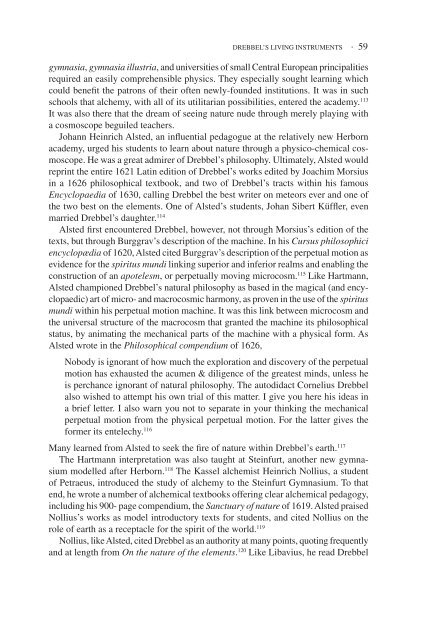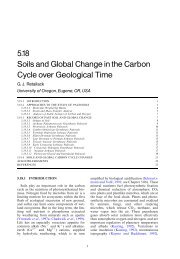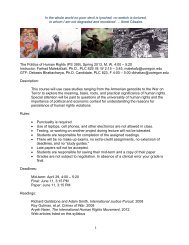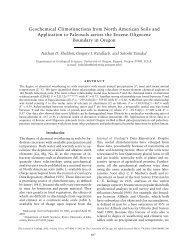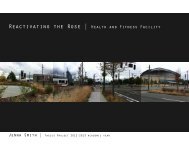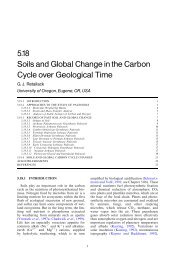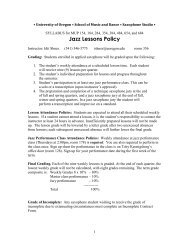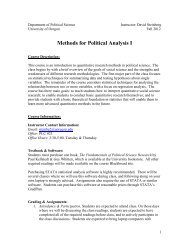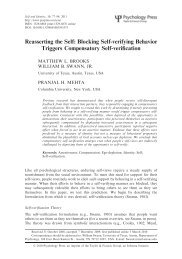drebbel's living instruments, hartmann's microcosm, and libavius's ...
drebbel's living instruments, hartmann's microcosm, and libavius's ...
drebbel's living instruments, hartmann's microcosm, and libavius's ...
You also want an ePaper? Increase the reach of your titles
YUMPU automatically turns print PDFs into web optimized ePapers that Google loves.
DREBBEL’S LIVING INSTRUMENTS · 59gymnasia, gymnasia illustria, <strong>and</strong> universities of small Central European principalitiesrequired an easily comprehensible physics. They especially sought learning whichcould benefit the patrons of their often newly-founded institutions. It was in suchschools that alchemy, with all of its utilitarian possibilities, entered the academy. 113It was also there that the dream of seeing nature nude through merely playing witha cosmoscope beguiled teachers.Johann Heinrich Alsted, an influential pedagogue at the relatively new Herbornacademy, urged his students to learn about nature through a physico-chemical cosmoscope.He was a great admirer of Drebbel’s philosophy. Ultimately, Alsted wouldreprint the entire 1621 Latin edition of Drebbel’s works edited by Joachim Morsiusin a 1626 philosophical textbook, <strong>and</strong> two of Drebbel’s tracts within his famousEncyclopaedia of 1630, calling Drebbel the best writer on meteors ever <strong>and</strong> one ofthe two best on the elements. One of Alsted’s students, Johan Sibert Küffler, evenmarried Drebbel’s daughter. 114Alsted first encountered Drebbel, however, not through Morsius’s edition of thetexts, but through Burggrav’s description of the machine. In his Cursus philosophiciencyclopædia of 1620, Alsted cited Burggrav’s description of the perpetual motion asevidence for the spiritus mundi linking superior <strong>and</strong> inferior realms <strong>and</strong> enabling theconstruction of an apotelesm, or perpetually moving <strong>microcosm</strong>. 115 Like Hartmann,Alsted championed Drebbel’s natural philosophy as based in the magical (<strong>and</strong> encyclopaedic)art of micro- <strong>and</strong> macrocosmic harmony, as proven in the use of the spiritusmundi within his perpetual motion machine. It was this link between <strong>microcosm</strong> <strong>and</strong>the universal structure of the macrocosm that granted the machine its philosophicalstatus, by animating the mechanical parts of the machine with a physical form. AsAlsted wrote in the Philosophical compendium of 1626,Nobody is ignorant of how much the exploration <strong>and</strong> discovery of the perpetualmotion has exhausted the acumen & diligence of the greatest minds, unless heis perchance ignorant of natural philosophy. The autodidact Cornelius Drebbelalso wished to attempt his own trial of this matter. I give you here his ideas ina brief letter. I also warn you not to separate in your thinking the mechanicalperpetual motion from the physical perpetual motion. For the latter gives theformer its entelechy. 116Many learned from Alsted to seek the fire of nature within Drebbel’s earth. 117The Hartmann interpretation was also taught at Steinfurt, another new gymnasiummodelled after Herborn. 118 The Kassel alchemist Heinrich Nollius, a studentof Petraeus, introduced the study of alchemy to the Steinfurt Gymnasium. To thatend, he wrote a number of alchemical textbooks offering clear alchemical pedagogy,including his 900- page compendium, the Sanctuary of nature of 1619. Alsted praisedNollius’s works as model introductory texts for students, <strong>and</strong> cited Nollius on therole of earth as a receptacle for the spirit of the world. 119Nollius, like Alsted, cited Drebbel as an authority at many points, quoting frequently<strong>and</strong> at length from On the nature of the elements. 120 Like Libavius, he read Drebbel


